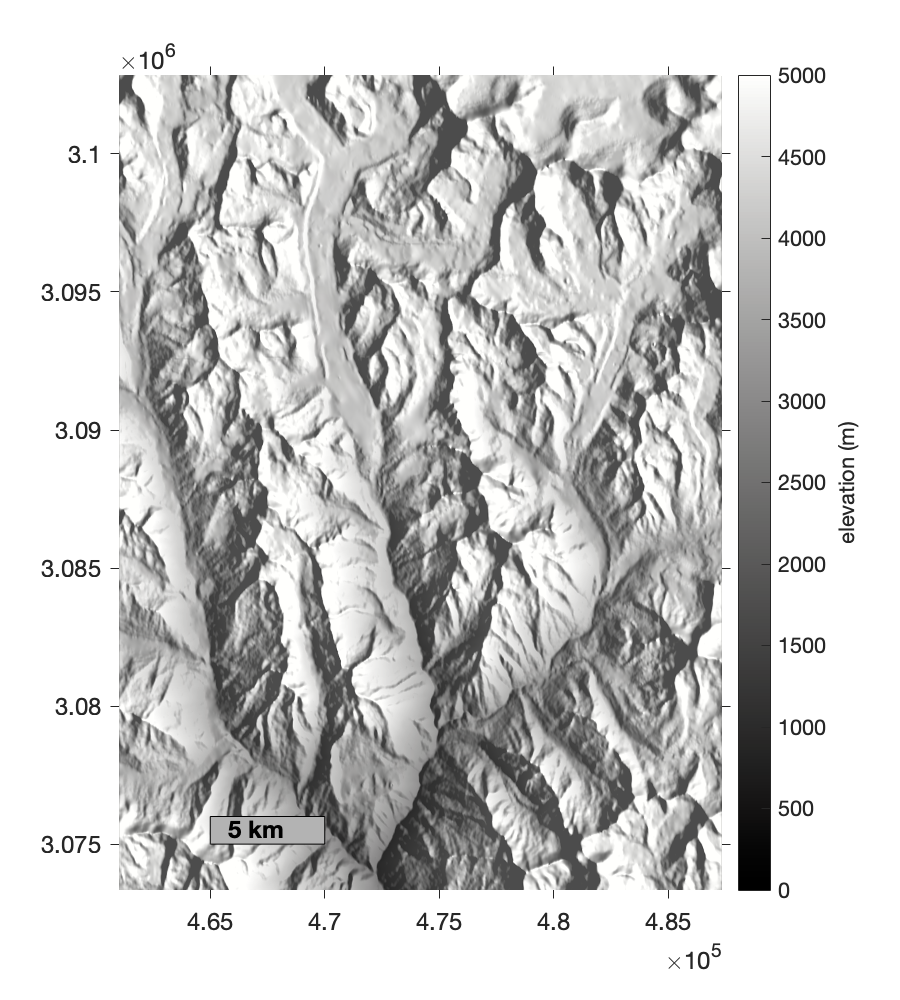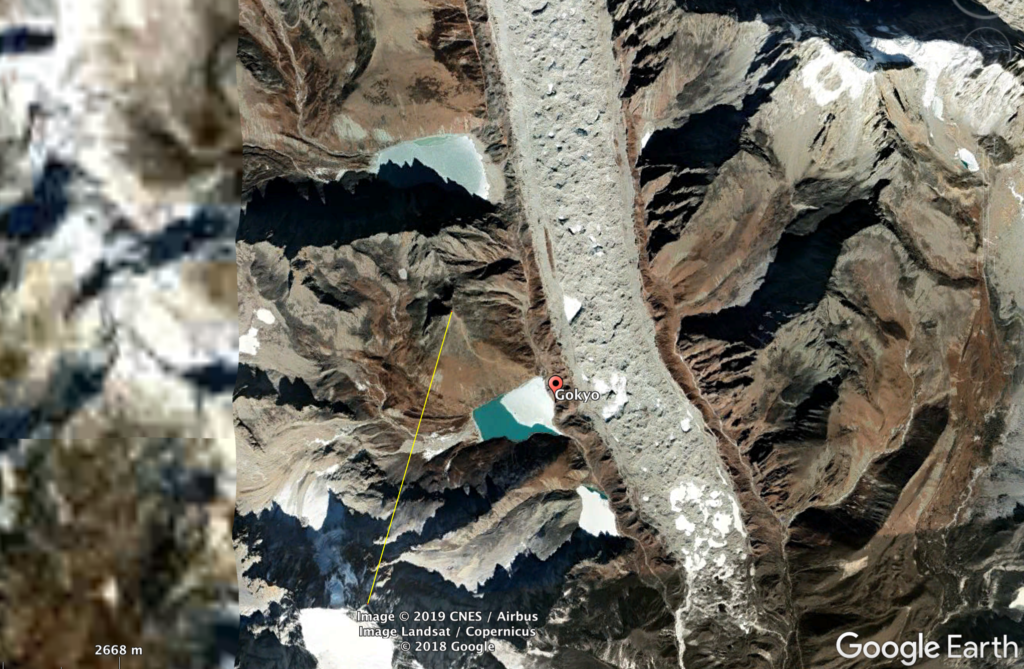Periglacial (glacier-adjacent) lakes sometimes form in deep depressions carved by ice. In the Himalayas, a series of deep lakes known as the Gokyo Lakes have formed adjacent to Ngozumpa Glacier, a large debris-covered glacier at the base of Cho Oyu (the 6th highest peak in the world). These lakes are as much as ~60 m deep, and experience seasonal ice cover. These conditions together with turbidity provided by glacial melt streams can lead to seasonal stratification.

The lakes also experience annual water-level changes of up to ~12 m, depending on whether or not the lakes have a surface discharge stream. The largest lake (Lake 4, or Thonak Cho) experiences the largest variations—during the summer monsoon the lake level rises, and during the fall and winter the water discharges through the subsurface. In contrast, Gokyo Lake next to the town of Gokyo appears to experience minimal water-level change, and discharges by a surface stream to two downstream lakes and then to the Dudh Kosi (part of the headwaters of the Ganges River).

In 2019 & 2021, Emily joined researchers at UNC Chapel Hill (Dr. Rich McLaughlin and Dr. Roberto Camassa, Applied Mathematics; Dr. Harvey Seim, Marine Sciences; and Dr. Lauren Leve, Religious Studies) to conduct studies on the lake structure. A small mooring was deployed (2018-2021) to measure water level and temperature in the lake, and we collected drone imagery to constrain elevations. Roberto created a model of the subsurface discharge, which captures the filling and draining dynamics based precipitation and runoff available from regional measurements and global models.

Project Publications
Camassa, R., Eidam, E.F., Leve, L.G., McLaughlin, R.M., Seim, H.E., Sharma, S. 2023. Extreme seasonal water-level changes and hydraulic modeling of deep, high-altitude, glacial-carved, Himalayan Lakes. Scientific Reports. https://doi.org/10.21203/rs.3.rs-2592241/v1
————————————
This work was funded by an internal grant to R. McLaughlin and R. Camassa

